Reduced packaging is the big news this Easter, says Tracy West
All the major chocolate manufacturers seem to be excited about just one thing this Easter – the fact that they have reduced the packaging on their eggs. It’s big news for the industry and good news for retailers, because less packaging translates into smaller packs and more room on shelf.
Trade communications manager Kate Harding says it will continue to reduce packaging for boxed eggs in 2009 to deliver a 25% reduction in packaging across medium shell eggs, and an average 30% reduction on large shell eggs. She says: “Medium and large shell eggs are real volume drivers, with Cadbury having a 36% share of the shell eggs category (AC Nielsen), so reducing the packaging for these products can have a genuine impact.”
Reduced packaging is a key focus for Nestlé, too. UK trade communications manager Graham Walker says it’s shoppers who are dictating these changes and reckons it’s good news for c-stores: “Reduced packaging equals improved distribution efficiency. It also means better shelf utilisation or, put simply, smaller packs taking up less space on shelves.”
Walker says Nestlé is the first manufacturer to remove plastic inserts from most of its shell eggs. Instead, Nestlé is using a fully recyclable card tray to secure the eggs in their boxes. The company is supporting the changes with an ad campaign in The Sun, Daily Mirror and Daily Mail.
Meanwhile, Mars has reduced its carton weight by 42% (versus a target of 25%), saving 200 tonnes of cardboard a year. In addition, it has reduced its plastic insert weight by 35% – saving 69 tonnes of plastic a year. Plus it has moved all its eggs (except Galaxy Premium Egg) to 100% recycled cardboard. All eggs will feature advice for consumers on how and where to dispose of the packaging.
Over at Kraft, Terry’s Chocolate Orange and Toblerone eggs will highlight the new Forestry Stewardship Council (FSC) accreditation, as well as recycling guidelines. The company’s convenience sales customer director Jack Pipe says: “Over-packaging was a major issue last year for many manufacturers. At Kraft we have added the FSC accreditation to the packaging of every boxed egg, which aims to reassure customers that the materials for the packaging have been sourced responsibly. The foil, carton and plastic insert are 100% recyclable and we have provided a link to www.recyclenow.com on the gift to help consumers find their nearest facility.”
Lindt’s two new shell eggs also feature reduced packaging. Both the cardboard outer and the plastic inners have been reduced in size and weight. However, it is the Lindt Gold Bunny that is responsible for 80% of its Easter sales and the company’s marketing director Simon Foster says it is its most efficiently packaged product as it is coated only in gold foil.
Cadbury’s premium organic chocolate arm Green & Black’s has reduced packaging across its Easter eggs by more than 60%. The business has removed plastic and instead uses FSC-accredited card – and because this is a strong card, less is needed. It reckons the use of a new cardboard bag structure not only protects the eggs but also reflects Green & Black’s premium positioning.
In addition, the packaging features a message to consumers: ‘We’ve taken time and care over our chocolate and packaging – we’d love you to do the same. Please recycle this box.’
Time to sell
Easter 2008 was a tough one for retailers all round as it was the earliest for 95 years, which led to a 10% drop in total market sales.
Lindt’s Foster comments: “There were only 83 days between the start of the year and the Easter weekend, so compared with previous years independent retailers lost out on about two weeks of the impulsive purchases that shoppers make in the run up to Easter. There are 102 days in the selling season for this year, with a longer gap between Mother’s Day and Easter, and we are confident that sales will successfully bounce back.”
There is also a fresh new look for the Cadbury Dairy Milk shell egg with emphasis on the fresh milk that goes into making it.
Cadbury enjoyed great success last Easter with its Easter Egg Trails in partnership with the National Trust. Cadbury’s partnership with the National Trust continues for 2009 – details of the trails will appear on about 30 million packs. However, this year visitors to the events will also be given the chance to invent their own design for an Egghead and the winner’s creation will become part of the range for Easter 2010.
According to ACNielsen, Cadbury has the largest share of the filled and mini egg category. Cadbury Creme Egg is ‘the big one’ and is in fact the best-selling chocolate product during the spring season, far outselling competing brands. Some 71% of Cadbury Creme Egg’s value is incremental to total chocolate sales and in 2008, the brand delivered a 77% value share of the total filled and mini sector.
Cadbury is investing £4.9m in it this Easter including TV, outdoor, press, digital and PR using the ‘Here today, goo tomorrow’ theme. There is also plenty of point-of-sale material, as Harding says till points and secondary displays are vital.
Cadbury Caramel Egg is number two in filled eggs and this Easter Cadbury is aiming to drive distribution of the brand even further. The company says its Caramel Egg delivers a distinctly different taste to Creme Egg so it’s important for retailers to stock it.
Cadbury Mini Eggs is the number one mini eggs brand and number two overall brand at Easter. Cadbury says 94% of consumers are aware of Mini Eggs, so it is vital that retailers maximise this by keeping stock levels high throughout spring.
The hollow Cadbury Dairy Milk Chick, filled with Cadbury Dairy Milk Buttons, was a popular novelty product last year. This year it gets a slightly different look. The Chick will not be wearing a purple waistcoat, but instead will be predominantly yellow to make it more visible in store. It will also feature a clear message saying that it contains Cadbury Buttons inside.
Meanwhile, Mars has significantly reduced its range (from 28 lines to 19) in a bid to provide a much simpler and more targeted range. But the firm has still added some new products, including the limited-edition Malteaster milk chocolate bunny with a crunchy and creamy Maltesers centre. Its launch is supported by a £1m campaign.
And the Mars & Friends range has been rebranded as Maltesers & Friends and repackaged in 100g bags. The product is a variety pack of mini eggs and it comes in a new reduced 18-count outer.
The new Galaxy All Block Collection egg, rrp £9.99, is aimed at the premium end of the market. However, Mars says it offers great value as it contains almost 600g of chocolate.
Says Mars trade relations manager Bep Sandhu: “This egg is perfect for retailers who are short of space as it is compact compared with many other eggs of this price on the market. It will offer a high return versus eggs at a lower selling price for the space on shelf.”
The big news from Nestlé is the launch of the Aero filled egg. It’s filled with bubbly Aero chocolate and Nestlé hopes it will appeal to younger consumers (16- to 34-year-olds). Rrp is 40p.
Also new are Smarties Mini Eggs and Milkybar Mini Eggs in 100g pouches, rrp 85p. There are two new small eggs: the Milkybar Shaker Egg, which is filled with white chocolate drops (rrp £1.69); and the Smarties Shaker Egg (rrp £1.59). Then there’s Bluebell the new Milkybar cow. The 100g hollow chocolate cow has a rrp of £1.99. Also new is the Quality Street adult egg where the sweets are back inside the chocolate shell, and the Kit Kat Senses mug egg.
According to AC Nielsen figures, Lindt was the only top-five manufacturer to grow sales last Easter. The Lindt Gold Bunny 200g and 50g variants are the number one and number two products respectively within the Easter novelty segment. For 2009 they will be supported in the run up to Easter by a £2.5m investment including two weeks of TV advertising.
New to the range is the 154g milk chocolate Gold Bunny and four chocolate filled carrots, rrp £4.88.
And specifically developed for independent retailers is a ‘trader pack’ of eight 100g Gold Bunnies. The bunnies come in a specially-designed tray which has a clear PET hood so retailers and consumers can see what they are buying.
The Lindor 28g filled egg enjoyed growth of more than 33% last Easter and as such is a must stock for c-store retailers this year. Display trays of 48 eggs are available for c-stores.
New to the Lindor range is the 322g shell egg, which comes with eight Lindor filled eggs, rrp £9.78; and the 285g Lindor shell egg, which comes with Lindor milk chocolate filled balls, rrp £7.82.
Ferrero has two new Rocher lines for Easter – the Ferrero Rocher Bunny, rrp £4.99, and the Ferrero Rocher boxed egg, rrp £9.99. The Bunny is a rabbit-shaped pack filled with Ferrero Rocher chocolates while the egg is made from milk chocolate with hazelnut pieces and comes with eight Ferrero Rocher.
Meanwhile, Ferrero’s Kinder brand has new chocolate bunnies, rrp £1.29, which the company reckons will be good for Easter egg hunts and small gifts.
However, retailers should not forget Kinder Surprise because, although it’s available all year round, it does particularly well at Easter. Its latest collection of toys is called Little Lambs.
All the major chocolate manufacturers seem to be excited about just one thing this Easter – the fact that they have reduced the packaging on their eggs. It’s big news for the industry and good news for retailers, because less packaging translates into smaller packs and more room on shelf.
Retailer's view
Kim Cameron,
Londis, Fort William, Inverness-shire
"Last Easter was one of our better ones; we got some really good deals from Londis, which meant we could compete with the multiples.
"In the past couple of years Londis has been pushing for us to put our eggs out earlier to 'sow the seeds'. We don't sell them any earlier, but it does work as people register that we have them and then come back for them. Our shell eggs are due in soon and we'll put them out on one of our promotional ends as soon as they come in.
"We put Creme Eggs out before Christmas and are selling about a box-and-a-half a week. We sell them at 44p, although they are currently on offer at 'two for 73p'.
"I'm hoping for a good Easter again this year. Our local Woolworths closed and it was always jam-packed with eggs, so hopefully we can pick up some of their sales. However, our order was made based on last year's sales and it might be difficult to get hold of more eggs."
Cadbury’s ‘Purple goes Green’ initiative has already won it plaudits, scooping the Best Green Packaging prize for its unboxed eggs at last year’s Green Awards. These unboxed eggs – called Eggheads – were launched last Easter and were available exclusively through Tesco outlets; this year they are available to everyone. Cadbury says Eggheads brought new people into the shell egg category, with its limited packaging and green credentials particularly appealing to younger and more upmarket consumers.Kim Cameron,
Londis, Fort William, Inverness-shire
"Last Easter was one of our better ones; we got some really good deals from Londis, which meant we could compete with the multiples.
"In the past couple of years Londis has been pushing for us to put our eggs out earlier to 'sow the seeds'. We don't sell them any earlier, but it does work as people register that we have them and then come back for them. Our shell eggs are due in soon and we'll put them out on one of our promotional ends as soon as they come in.
"We put Creme Eggs out before Christmas and are selling about a box-and-a-half a week. We sell them at 44p, although they are currently on offer at 'two for 73p'.
"I'm hoping for a good Easter again this year. Our local Woolworths closed and it was always jam-packed with eggs, so hopefully we can pick up some of their sales. However, our order was made based on last year's sales and it might be difficult to get hold of more eggs."
Trade communications manager Kate Harding says it will continue to reduce packaging for boxed eggs in 2009 to deliver a 25% reduction in packaging across medium shell eggs, and an average 30% reduction on large shell eggs. She says: “Medium and large shell eggs are real volume drivers, with Cadbury having a 36% share of the shell eggs category (AC Nielsen), so reducing the packaging for these products can have a genuine impact.”
Reduced packaging is a key focus for Nestlé, too. UK trade communications manager Graham Walker says it’s shoppers who are dictating these changes and reckons it’s good news for c-stores: “Reduced packaging equals improved distribution efficiency. It also means better shelf utilisation or, put simply, smaller packs taking up less space on shelves.”
Walker says Nestlé is the first manufacturer to remove plastic inserts from most of its shell eggs. Instead, Nestlé is using a fully recyclable card tray to secure the eggs in their boxes. The company is supporting the changes with an ad campaign in The Sun, Daily Mirror and Daily Mail.
Meanwhile, Mars has reduced its carton weight by 42% (versus a target of 25%), saving 200 tonnes of cardboard a year. In addition, it has reduced its plastic insert weight by 35% – saving 69 tonnes of plastic a year. Plus it has moved all its eggs (except Galaxy Premium Egg) to 100% recycled cardboard. All eggs will feature advice for consumers on how and where to dispose of the packaging.
Over at Kraft, Terry’s Chocolate Orange and Toblerone eggs will highlight the new Forestry Stewardship Council (FSC) accreditation, as well as recycling guidelines. The company’s convenience sales customer director Jack Pipe says: “Over-packaging was a major issue last year for many manufacturers. At Kraft we have added the FSC accreditation to the packaging of every boxed egg, which aims to reassure customers that the materials for the packaging have been sourced responsibly. The foil, carton and plastic insert are 100% recyclable and we have provided a link to www.recyclenow.com on the gift to help consumers find their nearest facility.”
Lindt’s two new shell eggs also feature reduced packaging. Both the cardboard outer and the plastic inners have been reduced in size and weight. However, it is the Lindt Gold Bunny that is responsible for 80% of its Easter sales and the company’s marketing director Simon Foster says it is its most efficiently packaged product as it is coated only in gold foil.
Cadbury’s premium organic chocolate arm Green & Black’s has reduced packaging across its Easter eggs by more than 60%. The business has removed plastic and instead uses FSC-accredited card – and because this is a strong card, less is needed. It reckons the use of a new cardboard bag structure not only protects the eggs but also reflects Green & Black’s premium positioning.
In addition, the packaging features a message to consumers: ‘We’ve taken time and care over our chocolate and packaging – we’d love you to do the same. Please recycle this box.’
Time to sell
Easter 2008 was a tough one for retailers all round as it was the earliest for 95 years, which led to a 10% drop in total market sales.
Lindt’s Foster comments: “There were only 83 days between the start of the year and the Easter weekend, so compared with previous years independent retailers lost out on about two weeks of the impulsive purchases that shoppers make in the run up to Easter. There are 102 days in the selling season for this year, with a longer gap between Mother’s Day and Easter, and we are confident that sales will successfully bounce back.”
Time for indulgence
Mars commissioned two major research projects during Easter 2008 – one focusing on the shopper and the other on the consumer. It has used its findings to shape its 2009 range and also advise retailers about shopper behaviour.
Its key findings were:
● Easter is the most permissible time of year for eating chocolate
● Easter means chocolate to most people unlike Christmas, where it forms only a part of the festivities
● The egg is iconic and the giving and receiving of eggs is central to Easter
● Easter is a key time when families get together. Many people will buy boxed chocolates as well as eggs, to take to relatives’ houses as a gift
● The shopper’s first thought when buying an egg is who they are buying it for
● Shoppers will have a strict budget for each person. Typically, the closer that person is to them, the more they will spend - most will buy their mums or wives the most expensive egg
● The second decision is brand and as eggs are a gift people will normally buy well-known and trusted brands
● Consumers are becoming increasingly overwhelmed by the number of products on offer
● The gift-worthiness of eggs has been reduced as prices have been driven down in the multiples, therefore consumers are trading up to more ‘special’ purchases
● 60% of purchase decisions are made at the fixture.
Mars therefore believes that the Easter fixture should be based on how shoppers buy, with the following segmentation: everyday Easter treat (filled and mini eggs); something for the kids (small eggs); eggs for everyone (big brand, medium and large eggs, rrp £3-£6); family sharing (boxed chocolates); posh luxury (premium eggs, rrp £6+); and Easter egg hunt (filled and mini eggs, novelties).
Meanwhile, on the product front, Cadbury says it wants to “reinforce its role as the first-choice confectionery brand during the spring season”. It will do this by linking its brand and spring via on-pack design, advertising and new products. Its Cadbury Dairy Milk Caramel shell egg has a new spring-inspired design. Cadbury says the design is more feminine, too, as the brand is popular with women. In addition, the medium egg now comes with two Cadbury Caramel filled eggs instead of two bars of chocolate. Mars commissioned two major research projects during Easter 2008 – one focusing on the shopper and the other on the consumer. It has used its findings to shape its 2009 range and also advise retailers about shopper behaviour.
Its key findings were:
● Easter is the most permissible time of year for eating chocolate
● Easter means chocolate to most people unlike Christmas, where it forms only a part of the festivities
● The egg is iconic and the giving and receiving of eggs is central to Easter
● Easter is a key time when families get together. Many people will buy boxed chocolates as well as eggs, to take to relatives’ houses as a gift
● The shopper’s first thought when buying an egg is who they are buying it for
● Shoppers will have a strict budget for each person. Typically, the closer that person is to them, the more they will spend - most will buy their mums or wives the most expensive egg
● The second decision is brand and as eggs are a gift people will normally buy well-known and trusted brands
● Consumers are becoming increasingly overwhelmed by the number of products on offer
● The gift-worthiness of eggs has been reduced as prices have been driven down in the multiples, therefore consumers are trading up to more ‘special’ purchases
● 60% of purchase decisions are made at the fixture.
Mars therefore believes that the Easter fixture should be based on how shoppers buy, with the following segmentation: everyday Easter treat (filled and mini eggs); something for the kids (small eggs); eggs for everyone (big brand, medium and large eggs, rrp £3-£6); family sharing (boxed chocolates); posh luxury (premium eggs, rrp £6+); and Easter egg hunt (filled and mini eggs, novelties).
There is also a fresh new look for the Cadbury Dairy Milk shell egg with emphasis on the fresh milk that goes into making it.
Cadbury enjoyed great success last Easter with its Easter Egg Trails in partnership with the National Trust. Cadbury’s partnership with the National Trust continues for 2009 – details of the trails will appear on about 30 million packs. However, this year visitors to the events will also be given the chance to invent their own design for an Egghead and the winner’s creation will become part of the range for Easter 2010.
According to ACNielsen, Cadbury has the largest share of the filled and mini egg category. Cadbury Creme Egg is ‘the big one’ and is in fact the best-selling chocolate product during the spring season, far outselling competing brands. Some 71% of Cadbury Creme Egg’s value is incremental to total chocolate sales and in 2008, the brand delivered a 77% value share of the total filled and mini sector.
Cadbury is investing £4.9m in it this Easter including TV, outdoor, press, digital and PR using the ‘Here today, goo tomorrow’ theme. There is also plenty of point-of-sale material, as Harding says till points and secondary displays are vital.
Cadbury Caramel Egg is number two in filled eggs and this Easter Cadbury is aiming to drive distribution of the brand even further. The company says its Caramel Egg delivers a distinctly different taste to Creme Egg so it’s important for retailers to stock it.
Cadbury Mini Eggs is the number one mini eggs brand and number two overall brand at Easter. Cadbury says 94% of consumers are aware of Mini Eggs, so it is vital that retailers maximise this by keeping stock levels high throughout spring.
The hollow Cadbury Dairy Milk Chick, filled with Cadbury Dairy Milk Buttons, was a popular novelty product last year. This year it gets a slightly different look. The Chick will not be wearing a purple waistcoat, but instead will be predominantly yellow to make it more visible in store. It will also feature a clear message saying that it contains Cadbury Buttons inside.
Meanwhile, Mars has significantly reduced its range (from 28 lines to 19) in a bid to provide a much simpler and more targeted range. But the firm has still added some new products, including the limited-edition Malteaster milk chocolate bunny with a crunchy and creamy Maltesers centre. Its launch is supported by a £1m campaign.
And the Mars & Friends range has been rebranded as Maltesers & Friends and repackaged in 100g bags. The product is a variety pack of mini eggs and it comes in a new reduced 18-count outer.
The new Galaxy All Block Collection egg, rrp £9.99, is aimed at the premium end of the market. However, Mars says it offers great value as it contains almost 600g of chocolate.
Says Mars trade relations manager Bep Sandhu: “This egg is perfect for retailers who are short of space as it is compact compared with many other eggs of this price on the market. It will offer a high return versus eggs at a lower selling price for the space on shelf.”
The big news from Nestlé is the launch of the Aero filled egg. It’s filled with bubbly Aero chocolate and Nestlé hopes it will appeal to younger consumers (16- to 34-year-olds). Rrp is 40p.
Also new are Smarties Mini Eggs and Milkybar Mini Eggs in 100g pouches, rrp 85p. There are two new small eggs: the Milkybar Shaker Egg, which is filled with white chocolate drops (rrp £1.69); and the Smarties Shaker Egg (rrp £1.59). Then there’s Bluebell the new Milkybar cow. The 100g hollow chocolate cow has a rrp of £1.99. Also new is the Quality Street adult egg where the sweets are back inside the chocolate shell, and the Kit Kat Senses mug egg.
According to AC Nielsen figures, Lindt was the only top-five manufacturer to grow sales last Easter. The Lindt Gold Bunny 200g and 50g variants are the number one and number two products respectively within the Easter novelty segment. For 2009 they will be supported in the run up to Easter by a £2.5m investment including two weeks of TV advertising.
New to the range is the 154g milk chocolate Gold Bunny and four chocolate filled carrots, rrp £4.88.
And specifically developed for independent retailers is a ‘trader pack’ of eight 100g Gold Bunnies. The bunnies come in a specially-designed tray which has a clear PET hood so retailers and consumers can see what they are buying.
The Lindor 28g filled egg enjoyed growth of more than 33% last Easter and as such is a must stock for c-store retailers this year. Display trays of 48 eggs are available for c-stores.
New to the Lindor range is the 322g shell egg, which comes with eight Lindor filled eggs, rrp £9.78; and the 285g Lindor shell egg, which comes with Lindor milk chocolate filled balls, rrp £7.82.
Ferrero has two new Rocher lines for Easter – the Ferrero Rocher Bunny, rrp £4.99, and the Ferrero Rocher boxed egg, rrp £9.99. The Bunny is a rabbit-shaped pack filled with Ferrero Rocher chocolates while the egg is made from milk chocolate with hazelnut pieces and comes with eight Ferrero Rocher.
Meanwhile, Ferrero’s Kinder brand has new chocolate bunnies, rrp £1.29, which the company reckons will be good for Easter egg hunts and small gifts.
However, retailers should not forget Kinder Surprise because, although it’s available all year round, it does particularly well at Easter. Its latest collection of toys is called Little Lambs.


















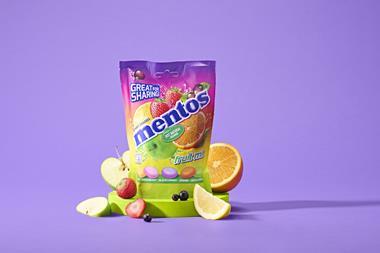
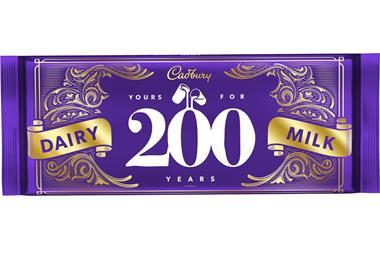
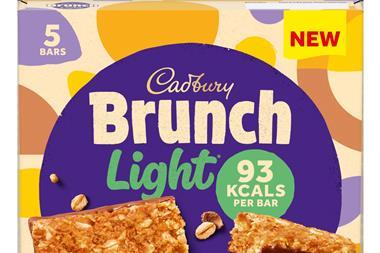



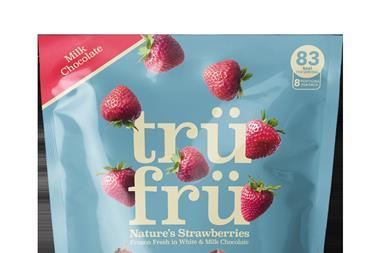
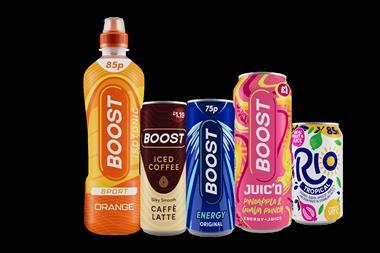
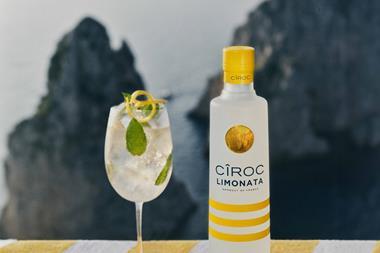
No comments yet